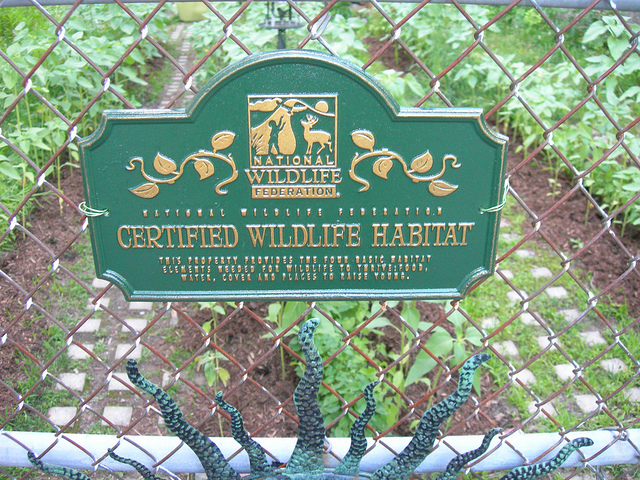Code Green Solutions


NWF Certified Wildlife Habitat Plaque
As cities and towns have grown, we have replaced green spaces with concrete and other hard or artificial surfaces, thereby dramatically decreasing not only the amount of natural spaces for humans, but also the amount of habitat available for wildlife. In fact, roughly 60% of the nation’s imperiled species live in metro areas. Artificial and impervious surfaces also contribute to stormwater flooding and pollution, as well as urban heat, which are made worse by climate change. We know that climate change also exacerbates existing drought conditions, but landscaping choices are not usually made with water-saving measures in mind.

A map of NWF Certified Wildlife Habitat projects in GBIG
National Wildlife Federation’s (NWF) Certified Wildlife Habitat ® program is part of a holistic green infrastructure approach, which includes other landscape features like open spaces, parks, and tree canopies, as well as low impact development (LID) approaches, like rain gardens. Since 1973, NWF’s program has enlisted homeowners, businesses, schools, farms, houses of worship and city and county parks to create wildlife habitats at more than 160,000 sites across the U.S. To be certified, a landowner must ensure that a property provides food, water, cover, and a place for wildlife to raise young. By incorporating features such as riparian buffers, rain gardens, and reduced lawn areas, Certified Wildlife Habitats ® can be designed to manage climate change impacts and reduce GHG emissions, while also creating local jobs and revitalizing communities. Discover more than 8000 NWF Certified Wildlife Habitat projects in GBIG.